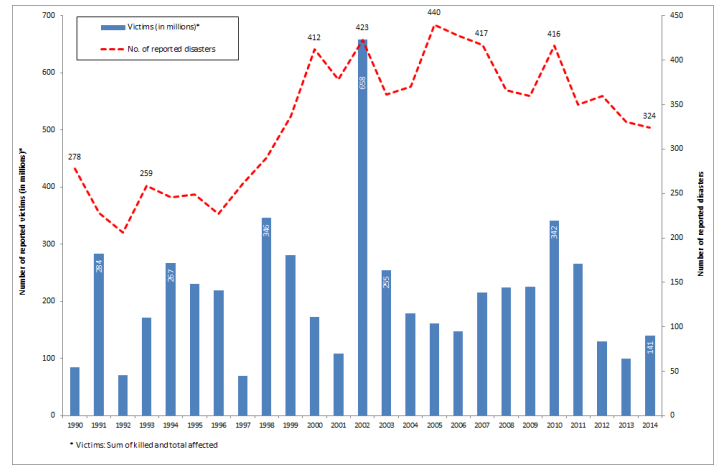Now, everyone in this room is aware of how serious the stakes are. Everyone here knows about the reams of scientific evidence that is gathering by the day and by the week, all of it compounding to provide one of the most authoritative scientific cases we have ever seen with respect to things that happen on the planet, all of them detailing how catastrophic climate change could be for future generations. We all know that the window of time that we have to prevent the worst impacts from happening is in fact narrow, and it is closing fast. We see fires – there was a National Academy of Science report just the other day – fires lasting longer, fires of greater impact. We see drought lasting longer, happening more frequently. We see agriculture affected in country after country. We see flooding in places it hasn’t occurred. Five-hundred-year floods have become once every five years, 10 years.
A report by the Centre for Research on the Epidemiology of Disasters (CRED) at the Catholic University of Louvain in Belgium (funded by USAID), however, seems to suggest otherwise. A graph from the report shows that after spiking in the late 1990s, reported natural disasters have leveled off or even fallen:
The figures for 2014, the last year data are available, seem to back up this interpretation. Natural disasters in 2014 were the third lowest in ten years, and that trend was across the board, including floods:
In 2014, 324 triggered natural disasters were registered. It was the third lowest number of reported disasters in the last decade, below the annual average disaster frequency observed from 2004 to 2013 (384)… The lower number of reported natural disasters in 2014 was mostly due to a smaller number of hydrological and climatological disasters (20.3% and 34.4% below their 2004-2013 annual average, respectively)… At a more detailed level, it appears that, in 2014, the number of people killed by floods (3,634) and storms (1,239) were, both, the second lowest of the decade, far below their 2004-2013 annual average (6,293 and 18,291, respectively).
The report also noted that in recent years, the numbers of victims of hydrological disasters is relatively low. For instance, seven floods in China made 16 to 20.5 million victims, “but these numbers are far from the ten millions of many floods in earlier years.”


